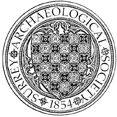Ongoing evaluation, continuing from the work carried out in 2003, by A Taylor of TVAS in advance of possible mineral extraction on this site. Material recovered included stray and residual finds of Upper Palaeolithic date, as well as Mesolithic, Neolithic and Bronze Age flintwork. Prehistoric, Roman, Saxon and medieval pottery was also found as well as occupation evidence of Bronze Age, Iron Age, Saxon, medieval and post-medieval dates.
